Sejarah arsitektur: Perbedaan antara revisi
Rahmatdenas (bicara | kontrib) ←Membuat halaman berisi ''''Sejarah arsitektur''' melacak perubahan dalam arsitektur melewati berbagai tradisi, wilayah, tren gaya keseluruhan, dan periode. Awal dari semua tradisi ini dianggap sebagai upaya manusia untuk memenuhi kebutuhan yang sangat mendasar, yaitu tempat tinggal dan perlindungan.<ref>Ching, Francis, D.K. and Eckler, James F. Introduction to Architecture. 2013. John Wiley & Sons. p13</ref> Istilah "arsitektur" secara umum mengacu pada bangunan, tetapi pada dasarnya ja...' Tag: VisualEditor pranala ke halaman disambiguasi |
(Tidak ada perbedaan)
|
Revisi per 24 Juni 2024 09.04
Sejarah arsitektur melacak perubahan dalam arsitektur melewati berbagai tradisi, wilayah, tren gaya keseluruhan, dan periode. Awal dari semua tradisi ini dianggap sebagai upaya manusia untuk memenuhi kebutuhan yang sangat mendasar, yaitu tempat tinggal dan perlindungan.[1] Istilah "arsitektur" secara umum mengacu pada bangunan, tetapi pada dasarnya jauh lebih luas, termasuk bidang-bidang yang sekarang kita anggap sebagai bentuk-bentuk praktik yang terspesialisasi, seperti urbanisme, teknik sipil, angkatan laut, militer,[2] dan lanskap.
Tren dalam arsitektur dipengaruhi, di antara faktor-faktor lainnya, oleh inovasi teknologi, terutama pada abad ke-19, 20, dan 21. Peningkatan dan/atau penggunaan baja, besi cor, ubin, beton bertulang, dan kaca memicu kemunculan Art Nouveau dan membuat Beaux Arts menjadi lebih megah.[3]
Dunia
Barok
-
Marble Court of the Palace of Versailles, Versailles, France, by Louis Le Vau and Jules Hardouin-Mansart, ca 1660 - 1715[8]
-
Garden façade of the Palace of Versailles, by Jules Hardouin-Mansart, 1678–1688
-
Plague Column, Vienna, by Matthias Rauchmiller and Johann Bernhard Fischer von Erlach, 1682 and 1694[10]
-
Chapel of the Palace of Versailles, 1696–1710[11]
Barok muncul dari Reformasi Katolik sebagai upaya Gereja Katolik Roma untuk menyampaikan kekuatannya dan menekankan keagungan Tuhan. Barok dan variannya yang terakhir, Rokoko, merupakan gaya pertama yang benar-benar mendunia dalam seni. Mendominasi lebih dari dua abad seni dan arsitektur di Eropa, Amerika Latin, dan sekitarnya dari sekitar tahun 1580 hingga sekitar tahun 1800. Bermula di studio lukis Bologna dan Roma pada tahun 1580-an dan 1590-an, serta studio seni pahat dan arsitektur Romawi pada dekade kedua dan ketiga abad ke-17, Barok menyebar dengan cepat ke seluruh Italia, Spanyol dan Portugal, Flanders, Prancis, Belanda, Inggris, Skandinavia, dan Rusia, serta ke pusat-pusat Eropa tengah dan timur dari Munich (Jerman) hingga Vilnius (Lithuania). Kekaisaran Portugis, Spanyol, dan Prancis, serta jaringan perdagangan Belanda memiliki peran utama dalam menyebarkan kedua gaya ini ke Amerika serta Afrika dan Asia yang terjajah, ke berbagai tempat seperti Lima, Mozambik, Goa, dan Filipina.[13] Karena penyebarannya di wilayah dengan tradisi arsitektur yang berbeda, beberapa jenis Barok muncul menyesuaikan lokasi, berbeda dalam beberapa aspek, tetapi secara keseluruhan serupa. Sebagai contoh, Barok Prancis tampak tegas dan berbeda dari asalnya, mendahului Neoklasikisme dan arsitektur Zaman Pencerahan.[4] Arsitektur Barok campuran Amerika asli/Eropa pertama kali muncul di Amerika Selatan (bukannya Meksiko) pada akhir abad ke-17, setelah simbol dan gaya asli yang menjadi ciri khas varian Barok yang tidak biasa ini telah dipertahankan selama abad sebelumnya di media lain, contoh yang sangat baik dari hal ini adalah Gereja Jesuit di Arequipa (Peru).[14]
Rokoko
-
The ceiling of the oval Salon of the Princesse in Hôtel de Soubise, Paris, by Germain Boffrand, 1740[16]
-
Pilgrimage Church of Wies, Steingaden, Germany, by Dominikus and Johann Baptist Zimmermann, 1754[18]
The name Rococo derives from the French word rocaille, which describes shell-covered rock-work, and coquille, meaning seashell. Rococo architecture is fancy and fluid, accentuating asymmetry, with an abundant use of curves, scrolls, gilding and ornaments. The style enjoyed great popularity with the ruling elite of Europe during the first half of the 18th century. It developed in France out of a new fashion in interior decoration, and spread across Europe. Domestic Rococo abandoned Baroque's high moral tone, its weighty allegories and its obsession with legitimacy: in fact, its abstract forms and carefree, pastoral subjects related more to notions of refuge and joy that created a more forgiving atmosphere for polite conversations. Rococo rooms are typically smaller than their Baroque counterparts, reflecting a movement towards domestic intimacy. Even the grander salons used for entertaining were more modest in scale, as social events involved smaller numbers of guests.
Nama Rokoko berasal dari kata Prancis rocaille, yang menggambarkan cangkang pada kerajinan batu berhias cangkang, dan coquille, yang berarti kerang. Arsitektur Rococo menampilkan kesan mewah dan mengalir, menonjolkan asimetri, dengan penggunaan lekukan, gulungan, penyepuhan, dan ornamen yang melimpah. Gaya ini sangat populer di kalangan elite penguasa Eropa selama paruh pertama abad ke-18. Gaya ini berkembang di Prancis sebagai mode baru dalam dekorasi interior, dan menyebar ke seluruh Eropa.[19] Rokoko domestik mengesampingkan atribut Barok yang tinggi; alegori beratnya dan obsesinya terhadap legitimasi: pada kenyataannya, bentuk-bentuk abstrak dan tema-tema pastoral yang riang dan bebas lebih berkaitan dengan pesan perlindungan dan kegembiraan yang menciptakan suasana yang lebih bersahabat untuk percakapan yang sopan. Kamar-kamar Rococo biasanya lebih kecil daripada kamar Barok, yang mencerminkan gerakan menuju keintiman domestik. Bahkan salon-salon megah yang digunakan untuk menjamu tamu pun berskala lebih sederhana, karena acara-acara sosial melibatkan jumlah tamu yang lebih sedikit.
Eksotisme
-
Chinese inspiration/Chinoiserie - Chinese House, Sanssouci Park, Potsdam, Germany, by Johann Gottfried Büring, 1755-1764[20]
-
Chinese inspiration/Chinoiserie - Chinese Pavilion, Ekerö, Sweden, by Carl Fredrik Adelcrantz, 1763–1769[21]
-
Islamic inspiration - Garden Mosque of the Schwetzingen Palace, Germany, by Nicolas de Pigage, 1779-1795[22]
-
Egyptian inspiration/Egyptian Revival - portico of the Hôtel Beauharnais, Paris, L.E.N. Bataille, ca1804[25]
-
Egyptian inspiration/Egyptian Revival - Egyptian Building, part of the Virginia Commonwealth University, Richmond, Virginia, USA, by Thomas Stewart, 1845[26]
-
Pre-Columbian inspiration/Mayan Revival - facade detail of the Mayan Theater, Los Angeles, USA, by Stiles O. Clements, 1927
-
Egyptian inspiration/mix of Egyptian Revival and Art Deco - Le Louxor Cinema [fr], Paris, by Henri Zipcy, 1919-1921[27]
-
Pre-Columbian inspiration/mix of Mayan Revival and Art Deco - Interior detail of 450 Sutter Street, San Francisco, California, by Timothy L. Pflueger, 1929
Interaksi antara Timur dan Barat yang disebabkan oleh penjelajahan kolonialis meninggalkan jejak pada estetika. Sebagai sesuatu yang langka dan baru bagi orang Barat, beberapa gaya non-Eropa mendapat tempat selama abad ke-17, 18, dan 19. Beberapa bangsawan dan raja membangun bangunan kecil yang terinspirasi oleh gaya ini di taman istana mereka, atau mendekorasi beberapa ruangan istana dengan gaya ini. Karena tidak sepenuhnya memahami asal-usul dan prinsip-prinsip yang mengatur estetika eksotis ini, orang Eropa terkadang menciptakan pencampuran dari gaya yang mereka coba tiru dan yang menjadi tren saat itu. Contoh yang baik dari hal ini adalah chinoiserie, gaya dekoratif Barat, yang populer selama abad ke-18, yang sangat terinspirasi oleh seni Cina, tetapi juga oleh Rokoko pada saat yang sama. Karena bepergian ke Tiongkok atau negara Timur Jauh lainnya merupakan sesuatu yang sulit pada saat itu dan tetap asing bagi kebanyakan orang Barat, imajinasi Eropa didorong oleh persepsi Asia sebagai tempat kekayaan dan kemewahan, dan akibatnya, para penikmat seni dari kaisar hingga pedagang berlomba-lomba untuk menghiasi tempat tinggal mereka dengan barang-barang Asia dan mendekorasinya dengan gaya Asia. Ketika benda-benda Asia sulit didapat, para pengrajin dan pelukis Eropa melangkah maju untuk memenuhi permintaan tersebut, menciptakan perpaduan antara bentuk-bentuk Rokoko dan figur, motif, dan teknik Asia.
Neoklasik
-
Staircase of the Petit Trianon, by Ange-Jacques Gabriel, 1764[30]
-
Brandenburg Gate, in Berlin, Germany, by Carl Gotthard Langhans, 1791
-
Empress Joséphine's Bedroom in Château de Malmaison, Rueil-Malmaison, France, by Charles Percier and Pierre-François-Léonard Fontaine, 1800-1802[34]
-
Napoleon's bath of the Château de Rambouillet, Rambouillet, France, painted by Godard and Jean Vasserot, 1806
-
Cast iron railing detail of the Schlossbrücke, Berlin, by Karl Friedrich Schinkel, designed in 1819 and produced in 1824[36]
Arsitektur Neoklasik berfokus pada detail Yunani dan Romawi Kuno, dinding polos dan putih, serta kemegahan skala. Dibandingkan dengan gaya sebelumnya, Barok dan Rokoko, eksterior Neoklasik cenderung lebih minimalis, menampilkan garis-garis lurus dan bersudut, namun tetap berornamen. Garis-garis yang jelas dan rasa keseimbangan serta proporsi gaya ini bekerja dengan baik untuk bangunan-bangunan megah (seperti Panthéon di Paris) dan juga bangunan yang lebih kecil (seperti Petit Trianon).
Penggalian selama abad ke-18 di Pompeii dan Herculaneum, yang keduanya terkubur di bawah abu vulkanik selama letusan Gunung Vesuvius pada tahun 79 Masehi, mengilhami kembalinya keteraturan dan rasionalitas, sebagian besar berkat tulisan-tulisan dari Johann Joachim Winckelmann.[38][39] Pada pertengahan abad ke-18, zaman kuno dijunjung tinggi sebagai standar arsitektur yang belum pernah ada sebelumnya. Neoklasikisme adalah penyelidikan mendasar tentang dasar-dasar bentuk dan makna arsitektur. Pada tahun 1750-an, kerja sama eksplorasi arkeologi dan teori arsitektur dimulai, yang akan terus berlanjut pada abad ke-19. Marc-Antoine Laugier menulis pada tahun 1753 bahwa 'Arsitektur benar-benar berutang kepada orang-orang Yunani'.[40]
Revivalism and Eclecticism
-
Russian Revival - Cathedral of Christ the Saviour, Moscow, Russia, 1839–1860, destroyed in 1931 and rebuilt in 1995–2000
-
Indo-Saracenic - The Chhatrapati Shivaji Maharaj Terminus, previously Victoria Terminus, a mixture of Romanesque, Gothic and Mughal elements Mumbai, Maharashtra, by Frederick William Stevens 1878–1888
-
Byzantine Revival - Alexander Nevsky Cathedral, Sofia, Bulgaria, by Alexander Pomerantsev, 1882–1912
-
Tudor Revival architecture - The Beaney House of Art and Knowledge, Canterbury, England, by A.H. Campbell, 1899
-
Rococo Revival - Apartment building no. 8 on Rue de Miromesnil, Paris, by P. Lobrot, 1900
-
Louis XVI Revival - Apartment building no. 2 on Rue de Miromesnil, Paris, unknown architect, ca1900
-
Romanian Revival - The C.N. Câmpeanu House on Bulevardul Dacia, Bucharest, Romania, ca 1923, by Constantin Nănescu[41]
-
Mediterranean Revival - General Mandiros Ciomac and Simion Ciomac Building (Strada Armenească no. 12), Bucharest, by Ion Giurgea, 1938[42]
The 19th century was dominated by a wide variety of stylistic revivals, variations, and interpretations. Revivalism in architecture is the use of visual styles that consciously echo the style of a previous architectural era. Modern-day Revival styles can be summarized within New Classical architecture, and sometimes under the umbrella term traditional architecture.
The idea that architecture might represent the glory of kingdoms can be traced to the dawn of civilisation, but the notion that architecture can bear the stamp of national character is a modern idea, that appeared in the 18th century historical thinking and given political currency in the wake of the French Revolution. As the map of Europe was repeatedly changing, architecture was used to grant the aura of a glorious past to even the most recent nations. In addition to the credo of universal Classicism, two new, and often contradictory, attitudes on historical styles existed in the early 19th century. Pluralism promoted the simultaneous use of the expanded range of style, while Revivalism held that a single historical model was appropriate for modern architecture. Associations between styles and building types appeared, for example: Egyptian for prisons, Gothic for churches, or Renaissance Revival for banks and exchanges. These choices were the result of other associations: the pharaohs with death and eternity, the Middle Ages with Christianity, or the Medici family with the rise of banking and modern commerce.

Whether their choice was Classical, medieval, or Renaissance, all revivalists shared the strategy of advocating a particular style based on national history, one of the great enterprises of historians in the early 19th century. Only one historic period was claimed to be the only one capable of providing models grounded in national traditions, institutions, or values. Issues of style became matters of state.[43]
The most well-known Revivalist style is the Gothic Revival one, that appeared in the mid-18th century in the houses of a number of wealthy antiquarians in England, a notable example being the Strawberry Hill House. German Romantic writers and architects were the first to promote Gothic as a powerful expression of national character, and in turn use it as a symbol of national identity in territories still divided. Johann Gottfried Herder posed the question 'Why should we always imitate foreigners, as if we were Greeks or Romans?'.[44]
In art and architecture history, the term Orientalism refers to the works of the Western artists who specialized in Oriental subjects, produced from their travels in Western Asia, during the 19th century. In that time, artists and scholars were described as Orientalists, especially in France.
In India, during the British Raj, a new style, Indo-Saracenic, (also known as Indo-Gothic, Mughal-Gothic, Neo-Mughal, or Hindoo style) was getting developed, which incorporated varying degrees of Indian elements into the Western European style. The Churches and convents of Goa are another example of the blending of traditional Indian styles with western European architectural styles. Most Indo-Saracenic public buildings were constructed between 1858 and 1947, with the peaking at 1880.[45] The style has been described as "part of a 19th-century movement to project themselves as the natural successors of the Mughals".[46] They were often built for modern functions such as transport stations, government offices, and law courts. It is much more evident in British power centres in the subcontinent like Mumbai, Chennai, and Kolkata.[47]
Beaux-Arts
-
Grand stairs of the Palais Garnier, by Charles Garnier, 1860–1875[48]
-
Anker Building, Bucharest, by Leonida Negrescu, ca1900[52]
-
Hôtel Roxoroid de Belfort, Paris, 1911, by André Arfvidson
The Beaux-Arts style takes its name from the École des Beaux-Arts in Paris, where it developed and where many of the main exponents of the style studied. Due to the fact that international students studied here, there are buildings from the second half of the 19th century and the early 20th century of this type all over the world, designed by architects like Charles Girault, Thomas Hastings, Ion D. Berindey or Petre Antonescu. Today, from Bucharest to Buenos Aires and from San Francisco to Brussels, the Beaux-Arts style survives in opera houses, civic structures, university campuses commemorative monuments, luxury hotels and townhouses. The style was heavily influenced by the Paris Opéra House (1860–1875), designed by Charles Garnier, the masterpiece of the 19th century renovation of Paris, dominating its entire neighbourhood and continuing to astonish visitors with its majestic staircase and reception halls. The Opéra was an aesthetic and societal turning point in French architecture. Here, Garnier showed what he called a style actuel, which was influenced by the spirit of the time, aka Zeitgeist, and reflected the designer's personal taste.
Beaux-Arts façades were usually imbricated, or layered with overlapping classical elements or sculpture. Often façades consisted of a high rusticated basement level, after it a few floors high level, usually decorated with pilasters or columns, and at the top an attic level and/or the roof. Beaux-Arts architects were often commissioned to design monumental civic buildings symbolic of the self-confidence of the town or city. The style aimed for a Baroque opulence through lavishly decorated monumental structures that evoked Louis XIV's Versailles. However, it was not just a revival of the Baroque, being more of a synthesis of Classicist styles, like Renaissance, Baroque, Rococo, Neoclassicism etc.[55][56][57]
Industry and new technologies
-
Le Bon Marché, Paris, by Louis-Charles Boileau in collaboration with the engineering firm of Gustave Eiffel, 1872[60]
-
Interior of the Bradbury Building, with its exposed staircases and free-standing hydraulic elevators, Los Angeles, USA, by George Herbert Wyman, 1889-1893[61]
-
Tietz Department Store, with its huge shop windows running through all the floors, Berlin, Germany, by Bernhard Sehring and L.Lachmann, 1899-1900[62]
Because of the Industrial Revolution and the new technologies it brought, new types of buildings have appeared. By 1850 iron was quite present in dailylife at every scale, from mass-produced decorative architectural details and objects of apartment buildings and commercial buildings to train sheds. A well-known 19th century glass and iron building is the Crystal Palace from Hyde Park (London), built in 1851 to house the Great Exhibition, having an appearance similar with a greenhouse. Its scale was daunting.
The marketplace pioneered novel uses of iron and glass to create an architecture of display and consumption that made the temporary display of the world fairs a permanent feature of modern urban life. Just after a year after the Crystal Palace was dismantaled, Aristide Boucicaut opened what historians of mass consumption have labelled the first department store, Le Bon Marché in Paris. As the store expanded, its exterior took on the form of a public monument, being highly decorated with French Renaissance Revival motifs. The entrances advanced subtly onto the pavemenet, hoping to captivate the attention of potential customers. Between 1872 and 1874, the interior was remodelled by Louis-Charles Boileau, in collaboration with the young engineering firm of Gustave Eiffel. In place of the open courtyard required to permit more daylight into the interior, the new building focused around three skylight atria.[63]
Art Nouveau
Popular in many countries from the early 1890s until the outbreak of World War I in 1914, Art Nouveau was an influential although relatively brief art and design movement and philosophy. Despite being a short-lived fashion, it paved the way for the modern architecture of the 20th century. Between ca 1870 and 1900, a crisis of historicism occurred, during which the historicist culture was critiqued, one of the voices being Friedrich Nietzsche in 1874, who diagnosed 'a malignant historical fervour' as one of the crippling symptoms of a modern culture burdened by archaeological study and faith in the laws of historical progression.
Focusing on natural forms, asymmetry, sinuous lines and whiplash curves, architects and designers aimed to escape the excessively ornamental styles and historical replications, popular during the 19th century. However, the style was not completely new, since Art Nouveau artists drew on a huge range of influences, particularly Beaux-Arts architecture, the Arts and Crafts movement, aestheticism and Japanese art. Buildings used materials associated in the 19th century with modernity, such as cast-iron and glass. A good example of this is the Paris Metro entrance at Porte Dauphine by Hector Guimard (1900). Its cast-iron and glass canopy is as much sculpture as it is architecture. In Paris, Art Nouveau was even called Le Style Métro by some. The interest for stylized organic forms of ornamentation originated in the mid 19th century, when it was promoted in The Grammar of Ornament (1854), a pattern book by British architect Owen Jones (architect) (1809–1874).
Whiplash curves and sinuous organic lines are its most familiar hallmarks, however the style can not be summarized only to them, since its forms are much more varied and complex. The movement displayed many national interpretations. Depending on where it manifested, it was inspired by Celtic art, Gothic Revival, Rococo Revival, and Baroque Revival. In Hungary, Romania and Poland, for example, Art Nouveau incorporated folkloric elements. This is true especially in Romania, because it facilitated the appearance of the Romanian Revival style, which draws inspiration from Brâncovenesc architecture and traditional peasant houses and objects. The style also had different names, depending on countries. In Britain it was known as Modern Style, in the Netherlands as Nieuwe Kunst, in Germany and Austria as Jugendstil, in Italy as Liberty style, in Romania as Arta 1900, and in Japan as Shiro-Uma. It would be wrong to credit any particular place as the only one where the movement appeared, since it seems to have arisen in multiple locations.[72][73][74][75]
Modern
-
AEG turbine factory, Berlin, Germany, by Peter Behrens, 1909
Rejecting ornament and embracing minimalism and modern materials, Modernist architecture appeared across the world in the early 20th century. Art Nouveau paved the way for it, promoting the idea of non-historicist styles. It developed initially in Europe, focusing on functionalism and the avoidance of decoration. Modernism reached its peak during the 1930s and 1940s with the Bauhaus and the International Style, both characterised by asymmetry, flat roofs, large ribbon windows, metal, glass, white rendering and open-plan interiors.[79]
Art Deco
-
The boudoir of fashion designer Jeanne Lanvin (now in the Museum of Decorative Arts, Paris), by Armand-Albert Rateau, 1920-1922[80]
-
Door of Bulevardul Lascăr Catargiu no. 28, Bucharest, Romania, unknown architect, ca1930
Art Deco, named retrospectively after an exhibition held in Paris in 1925, originated in France as a luxurious, highly decorated style. It then spread quickly throughout the world - most dramatically in the United States - becoming more streamlined and modernistic through the 1930s. The style was pervasive and popular, finding its way into the design of everything from jewellery to film sets, from the interiors of ordinary homes to cinemas, luxury streamliners and hotels. Its exuberance and fantasy captured the spirit of the 'roaring 20s' and provided an escape from the realities of the Great Depression during the 1930s.[84]
Although it ended with the start of World War II, its appeal has endured. Despite that it is an example of modern architecture, elements of the style drew on ancient Egyptian, Greek, Roman, African, Aztec and Japanese influences, but also on Futurism, Cubism and the Bauhaus. Bold colours were often applied on low-reliefs. Predominant materials include chrome plating, brass, polished steel and aluminium, inlaid wood, stone and stained glass.
International Style
-
Seagram Building, New York City, by Ludwig Mies van der Rohe, 1958[88]
The International Style emerged in Europe after World War I, influenced by recent movements, including De Stijl and Streamline Moderne, and had a close relationship to the Bauhaus. The antithesis of nearly every other architectural movement that preceded it, the International Style eliminated extraneous ornament and used modern industrial materials such as steel, glass, reinforced concrete and chrome plating. Rectilinear, flat-roofed, asymmetrical and white, it became a symbol of modernity across the world. It seemed to offer a crisp, clean, rational future after the horrors of war. Named by the architect Philip Johnson and historian Henry-Russell Hitchcock (1903–1987) in 1932, the movement was epitomized by Charles-Edouard Jeanneret, or Le Corbusier and was clearly expressed in his statement that 'a house is a machine for living in'.[89]
Brutalist
Based on social equality, Brutalism was inspired by Le Corbusier's 1947-1952 Unité d'habitation in Marseilles. It seems the term was originally coined by Swedish architect Hans Asplund (1921–1994), but Le Corbusier's use of the description béton brut, meaning raw concrete, for his choice of material for the Unité d'habitation was particularly influential. The style flourished from the 1950s to the mid-1970s, mainly using concrete, which although new in itself, was unconventional when exposed on facades. Before Brutalism, concrete was usually hidden beneath other materials.[95]
Postmodern
-
Multicolour interior of the Cambridge Judge Business School, Cambridge, UK, by John Outram, 1995[101]
Not one definable style, Postmodernism is an eclectic mix of approaches that appeared in the late 20th century in reaction against Modernism, which was increasingly perceived as monotonous and conservative. As with many movements, a complete antithesis to Modernism developed. In 1966, the architect Robert Venturi (1925–2018) had published his book, Complexity and Contradiction in Architecture, which praised the originality and creativity of Mannerist and Baroque architecture of Rome, and encouraged more ambiguity and complexity in contemporary design. Complaining about the austerity and tedium of so many smooth steel and glass Modernist buildings, and in deliberate denunciation of the famous Modernist 'Less is more', Venturi stated 'Less is a bore'. His theories became a majore influence on the development of Postmodernism.[96]
Deconstructivist
Deconstructivism in architecture is a development of postmodern architecture that began in the late 1980s. It is characterized by ideas of fragmentation, non-linear processes of design, an interest in manipulating ideas of a structure's surface or skin, and apparent non-Euclidean geometry,[108] (i.e., non-rectilinear shapes) which serve to distort and dislocate some of the elements of architecture, such as structure and envelope. The finished visual appearance of buildings that exhibit the many deconstructivist "styles" is characterised by a stimulating unpredictability and a controlled chaos.
Important events in the history of the Deconstructivist movement include the 1982 Parc de la Villette architectural design competition (especially the entry from the French philosopher Jacques Derrida and the American architect Peter Eisenman[109] and Bernard Tschumi's winning entry), the Museum of Modern Art's 1988 Deconstructivist Architecture exhibition in New York, organized by Philip Johnson and Mark Wigley, and the 1989 opening of the Wexner Center for the Arts in Columbus, designed by Peter Eisenman. The New York exhibition featured works by Frank Gehry, Daniel Libeskind, Rem Koolhaas, Peter Eisenman, Zaha Hadid, Coop Himmelblau, and Bernard Tschumi. Since the exhibition, many of the architects who were associated with Deconstructivism have distanced themselves from the term. Nonetheless, the term has stuck and has now, in fact, come to embrace a general trend within contemporary architecture.
- ^ Ching, Francis, D.K. and Eckler, James F. Introduction to Architecture. 2013. John Wiley & Sons. p13
- ^ Architecture. Def. 1. Oxford English Dictionary Second Edition on CD-ROM (v. 4.0) Oxford University Press 2009
- ^ Virginia McLeod, Belle Place, Sarah Kramer, Milena Harrison-Gray, and Cristopher Lacy (2019). HOUSES - Extraordinary Living. Phaidon. hlm. 9. ISBN 978-0-7148-7809-6.
- ^ a b Jones 2014, hlm. 223.
- ^ Jones 2014, hlm. 226.
- ^ Bailey 2012, hlm. 211.
- ^ Bailey 2012, hlm. 328.
- ^ Hodge 2019, hlm. 102.
- ^ Bailey 2012, hlm. 238.
- ^ Bailey 2012, hlm. 216.
- ^ Martin, Henry (1927). Le Style Louis XIV (dalam bahasa Prancis). Flammarion. hlm. 39.
- ^ Jones 2014, hlm. 230.
- ^ Bailey 2012, hlm. 4.
- ^ Bailey 2012, hlm. 364.
- ^ Hall, William (2019). Stone (dalam bahasa Inggris). Phaidon. hlm. 185. ISBN 978-0-7148-7925-3.
- ^ Jones 2014, hlm. 241.
- ^ Watkin, David (2022). A History of Western Architecture (dalam bahasa Inggris). Laurence King. hlm. 419. ISBN 978-1-52942-030-2.
- ^ a b Jones 2014, hlm. 238.
- ^ Hodge 2019, hlm. 30.
- ^ Sund 2019, hlm. 104.
- ^ "Kina slott, Drottningholm". www.sfv.se. National Property Board of Sweden. Diarsipkan dari versi asli tanggal 6 August 2014. Diakses tanggal 2 August 2014.
- ^ Jones 2014, hlm. 264.
- ^ Sund 2019, hlm. 151.
- ^ Jones 2014, hlm. 262.
- ^ Sund 2019, hlm. 216.
- ^ Hopkins 2014, hlm. 130.
- ^ Texier, Simon (2022). Architectures Art Déco - Paris et Environs - 100 Bâtiments Remarquable (dalam bahasa Inggris). Parigramme. hlm. 37. ISBN 978-2-37395-136-3.
- ^ Weston, Richard (2011). 100 Ideas That Changed Architecture (dalam bahasa Inggris). Laurence King. hlm. 84. ISBN 978-1-78627-567-7.
- ^ Jones 2014, hlm. 276.
- ^ a b Jones 2014, hlm. 273.
- ^ de Martin 1925, hlm. 17.
- ^ Fortenberry 2017, hlm. 274.
- ^ de Martin 1925, hlm. 61.
- ^ Jones 2014, hlm. 275.
- ^ Hall, William (2019). Stone (dalam bahasa Inggris). Phaidon. hlm. 159. ISBN 978-0-7148-7925-3.
- ^ Steffens, Martin (2004). Schinkel (dalam bahasa Rumania). Taschen. hlm. 37. ISBN 973-7959-11-6.
- ^ Hopkins 2014, hlm. 109.
- ^ Hodge 2019, hlm. 31.
- ^ http://www.visual-arts-cork.com/critics/winckelmann.htm
- ^ Bergdoll 2000, hlm. 9, 14.
- ^ Woinaroski, Cristina (2013). Istorie urbană, Lotizarea și Parcul Ioanid din București în context european (dalam bahasa Rumania). SIMETRIA. ISBN 978-973-1872-30-8.
- ^ Ghigeanu, Mădălin (2022). Curentul Mediteraneean în arhitectura interbelică. Vremea. hlm. 521. ISBN 978-606-081-135-0.
- ^ Bergdoll 2000, hlm. 139, 140, 141.
- ^ Bergdoll 2000, hlm. 139–142, 145.
- ^ Jayewardene-Pillai, 6, 14
- ^ Das, xi
- ^ Das, xi, xiv, 98, 101
- ^ a b Jones 2014, hlm. 296.
- ^ Marinache, Oana (2017). Paul Gottereau - Un Regal în Arhitectură (dalam bahasa Rumania). Editura Istoria Artei. hlm. 184. ISBN 978-606-8839-09-7.
- ^ Mariana Celac, Octavian Carabela and Marius Marcu-Lapadat (2017). Bucharest Architecture - an annotated guide (dalam bahasa Inggris). Ordinul Arhitecților din România. hlm. 90. ISBN 978-973-0-23884-6.
- ^ Jones 2014, hlm. 294.
- ^ Oltean, Radu (2016). Bucureștii Belle Époque (dalam bahasa Rumania). Art Historia. hlm. 47. ISBN 978-973-0-22923-3.
- ^ Hopkins 2014, hlm. 135.
- ^ "Villa in neorégencestijl". inventaris.onroerenderfgoed.be. 29 March 2019. Diakses tanggal 8 April 2022.
- ^ Jones 2014, hlm. 292, 295, 296.
- ^ Hopkins 2014, hlm. 132, 133, 134, 135.
- ^ Bailey 2012, hlm. 413.
- ^ Bergdoll 2000, hlm. 248.
- ^ Jones 2014, hlm. 267.
- ^ Bergdoll 2000, hlm. 236.
- ^ Gössel, Peter; Leuthäuser, Gabriele (2022). Architecture in the 20th Century (dalam bahasa Inggris). TASCHEN. hlm. 54. ISBN 978-3-8365-7090-9.
- ^ Gössel, Peter; Leuthäuser, Gabriele (2022). Architecture in the 20th Century (dalam bahasa Inggris). TASCHEN. hlm. 78. ISBN 978-3-8365-7090-9.
- ^ Bergdoll 2000, hlm. 207, 237, 238.
- ^ Jones 2014, hlm. 321.
- ^ Madsen, S. Tschudi (1977). Art Nouveau (dalam bahasa Rumania). Editura Meridiane.
- ^ Jones 2014, hlm. 323.
- ^ "Paris et l'Art Nouveau". Nº281 Dossier de l'Art (dalam bahasa Prancis). Éditions Faton. 2020.
- ^ Hopkins 2014, hlm. 141.
- ^ Duncan 1994, hlm. 44.
- ^ Duncan 1994, hlm. 52.
- ^ Mariana Celac, Octavian Carabela and Marius Marcu-Lapadat (2017). Bucharest Architecture - an annotated guide (dalam bahasa Inggris). Ordinul Arhitecților din România. hlm. 85. ISBN 978-973-0-23884-6.
- ^ Bergdoll 2000, hlm. 269, 279.
- ^ Jones 2014, hlm. 320, 321, 322.
- ^ Hodge 2019, hlm. 36.
- ^ Madsen, S. Tschudi (1977). Art Nouveau (dalam bahasa Rumania). Editura Meridiane. hlm. 7.
- ^ Virginia McLeod, Belle Place, Sarah Kramer, Milena Harrison-Gray, and Cristopher Lacy (2019). HOUSES - Extraordinary Living. Phaidon. hlm. 56. ISBN 978-0-7148-7809-6.
- ^ Jones 2014, hlm. 347.
- ^ Jones 2014, hlm. 348.
- ^ Hodge 2019, hlm. 37.
- ^ Criticos, Mihaela (2009). Art Deco sau Modernismul Bine Temperat - Art Deco or Well-Tempered Modernism (dalam bahasa Romanian and English). SIMETRIA. hlm. 43. ISBN 978-973-1872-03-2.
- ^ L., Clausen, Meredith (1987). Frantz Jourdain and the Samaritaine : art nouveau theory and criticism. Leiden: E.J Brill. ISBN 9789004078796. OCLC 27266259.
- ^ Jones 2014, hlm. 359.
- ^ Jones 2014, hlm. 360.
- ^ Dempsey, Amy (2018). Modern Art (dalam bahasa Inggris). Thames & Hudson. hlm. 70. ISBN 978-0-500-29322-5.
- ^ Hopkins 2014, hlm. 164.
- ^ Hodge 2019, hlm. 134.
- ^ Jones 2014, hlm. 416.
- ^ Jones 2014, hlm. 418.
- ^ Hodge 2019, hlm. 42.
- ^ Hodge 2019, hlm. 425.
- ^ Hodge 2019, hlm. 146.
- ^ Jones 2014, hlm. 426.
- ^ Jones 2014, hlm. 425.
- ^ Jones 2014, hlm. 428.
- ^ Hodge 2019, hlm. 46.
- ^ a b Hodge 2019, hlm. 47.
- ^ Hall, William (2019). Stone (dalam bahasa Inggris). Phaidon. hlm. 79. ISBN 978-0-7148-7925-3.
- ^ Jones 2014, hlm. 502.
- ^ Jones 2014, hlm. 510.
- ^ Gura, Judith (2017). Postmodern Design Complete (dalam bahasa Inggris). Thames & Hudson. hlm. 121. ISBN 978-0-500-51914-1.
- ^ Gura, Judith (2017). Postmodern Design Complete (dalam bahasa Inggris). Thames & Hudson. hlm. 120. ISBN 978-0-500-51914-1.
- ^ Watkin, David (2022). A History of Western Architecture (dalam bahasa Inggris). Laurence King. hlm. 722. ISBN 978-1-52942-030-2.
- ^ Hodge 2019, hlm. 531.
- ^ Hodge 2019, hlm. 154.
- ^ Hopkins 2014, hlm. 205.
- ^ Hopkins 2014, hlm. 206.
- ^ Melvin, Jeremy (2006). …isme Să Înțelegem Stilurile Arhitecturale (dalam bahasa Rumania). Enciclopedia RAO. hlm. 137. ISBN 973-717-075-X.
- ^ Husserl, Origins of Geometry, Introduction by Jacques Derrida
- ^ Jacques Derrida and Peter Eisenman, Chora L Works (New York: Monacelli Press, 1997)

![Temple du Marais, Paris, by François Mansart, ca 1632[4]](http://upload.wikimedia.org/wikipedia/commons/thumb/d/dc/Paris_75004_Temple_du_Marais_%28temple_Sainte-Marie%29_20151213.jpg/180px-Paris_75004_Temple_du_Marais_%28temple_Sainte-Marie%29_20151213.jpg)
![San Carlo alle Quattro Fontane, Rome, by Francesco Borromini, 1638-1677[5]](http://upload.wikimedia.org/wikipedia/commons/thumb/8/80/San_Carlo_alle_Quattro_Fontane_-_Front.jpg/156px-San_Carlo_alle_Quattro_Fontane_-_Front.jpg)
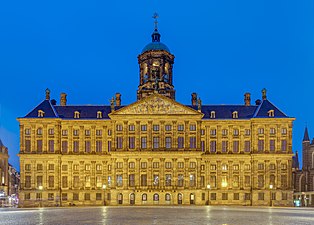
![St. Peter's Square, Rome, by Gian Lorenzo Bernini, 1656-1667[6]](http://upload.wikimedia.org/wikipedia/commons/thumb/d/d6/St_Peter%27s_Square%2C_Vatican_City_-_April_2007.jpg/401px-St_Peter%27s_Square%2C_Vatican_City_-_April_2007.jpg)
![Gardens at Vaux-le-Vicomte, France, by André Le Nôtre, 1657-1661[7]](http://upload.wikimedia.org/wikipedia/commons/thumb/0/0e/Kasteel_van_Vaux-le-Vicomte_-_Maincy_06.jpg/300px-Kasteel_van_Vaux-le-Vicomte_-_Maincy_06.jpg)
![Marble Court of the Palace of Versailles, Versailles, France, by Louis Le Vau and Jules Hardouin-Mansart, ca 1660 - 1715[8]](http://upload.wikimedia.org/wikipedia/commons/thumb/e/e8/Cour_de_Marbre_du_Ch%C3%A2teau_de_Versailles_October_5%2C_2011.jpg/339px-Cour_de_Marbre_du_Ch%C3%A2teau_de_Versailles_October_5%2C_2011.jpg)
![Dôme des Invalides, Paris, by Jules Hardouin-Mansart, 1677-1706[9]](http://upload.wikimedia.org/wikipedia/commons/thumb/4/4e/Cath%C3%A9drale_Saint-Louis-des-Invalides%2C_140309_2.jpg/169px-Cath%C3%A9drale_Saint-Louis-des-Invalides%2C_140309_2.jpg)
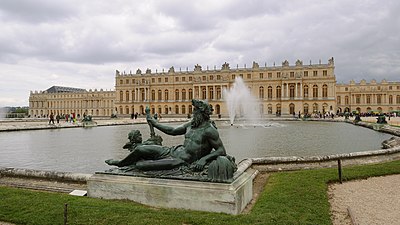
![Plague Column, Vienna, by Matthias Rauchmiller and Johann Bernhard Fischer von Erlach, 1682 and 1694[10]](http://upload.wikimedia.org/wikipedia/commons/thumb/8/8c/Wien_Graben_Pests%C3%A4ule_Ostseite.jpg/173px-Wien_Graben_Pests%C3%A4ule_Ostseite.jpg)
![Chapel of the Palace of Versailles, 1696–1710[11]](http://upload.wikimedia.org/wikipedia/commons/thumb/3/37/Versailles_Chapel_-_July_2006_edit.jpg/146px-Versailles_Chapel_-_July_2006_edit.jpg)
![Karlskirche, Vienna, Austria, by Johann Bernhard Fischer von Erlach, 1715-1737[12]](http://upload.wikimedia.org/wikipedia/commons/thumb/8/81/Karlskirche_Wien_September_2016.jpg/306px-Karlskirche_Wien_September_2016.jpg)


![Zwinger, Dresden, Germany, by Matthäus Daniel Pöppelmann, 1719[15]](http://upload.wikimedia.org/wikipedia/commons/thumb/c/cb/Dresden-Zwinger-Wallpavillion-gp.jpg/278px-Dresden-Zwinger-Wallpavillion-gp.jpg)
![Door of the Hôtel de Chenizot [fr], Paris, by Pierre Vigné de Vigny [fr], 1719](http://upload.wikimedia.org/wikipedia/commons/thumb/d/db/Porte_de_l%27h%C3%B4tel_de_Chenizot.jpg/169px-Porte_de_l%27h%C3%B4tel_de_Chenizot.jpg)
![The ceiling of the oval Salon of the Princesse in Hôtel de Soubise, Paris, by Germain Boffrand, 1740[16]](http://upload.wikimedia.org/wikipedia/commons/thumb/b/b4/Salon_ovale_de_la_princesse_in_the_H%C3%B4tel_de_Soubise_%2811%29.jpg/168px-Salon_ovale_de_la_princesse_in_the_H%C3%B4tel_de_Soubise_%2811%29.jpg)
![Amalienborg, Copenhagen, Denmark, by Nicolai Eigtved, 1750-1754[17]](http://upload.wikimedia.org/wikipedia/commons/thumb/2/29/Facade_of_the_Christian_VII%27s_Pal%C3%A6.jpg/338px-Facade_of_the_Christian_VII%27s_Pal%C3%A6.jpg)
![Palace of Queluz, Lisbon, Portugal, by Mateus Vicente de Oliveira, 1752[18]](http://upload.wikimedia.org/wikipedia/commons/thumb/1/1a/Palais_royal_de_Queluz_-_Vue_g%C3%A9n%C3%A9rale.jpg/338px-Palais_royal_de_Queluz_-_Vue_g%C3%A9n%C3%A9rale.jpg)
![Pilgrimage Church of Wies, Steingaden, Germany, by Dominikus and Johann Baptist Zimmermann, 1754[18]](http://upload.wikimedia.org/wikipedia/commons/thumb/6/64/Wieskirche%2C_Gemeinde_Steingaden_Ortsteil_Wies.JPG/338px-Wieskirche%2C_Gemeinde_Steingaden_Ortsteil_Wies.JPG)
![Chinese inspiration/Chinoiserie - Chinese House, Sanssouci Park, Potsdam, Germany, by Johann Gottfried Büring, 1755-1764[20]](http://upload.wikimedia.org/wikipedia/commons/thumb/d/dd/Chinese_House_Potsdam-%2C_Germany.jpg/268px-Chinese_House_Potsdam-%2C_Germany.jpg)
![Chinese inspiration/Chinoiserie - Chinese Pavilion, Ekerö, Sweden, by Carl Fredrik Adelcrantz, 1763–1769[21]](http://upload.wikimedia.org/wikipedia/commons/thumb/f/f9/Stockholm_Sweden_Royal-Domain-of_Drottningholm_Drottningholms-Kina-Slott-01.jpg/400px-Stockholm_Sweden_Royal-Domain-of_Drottningholm_Drottningholms-Kina-Slott-01.jpg)
![Islamic inspiration - Garden Mosque of the Schwetzingen Palace, Germany, by Nicolas de Pigage, 1779-1795[22]](http://upload.wikimedia.org/wikipedia/commons/thumb/7/75/MoscheeSchwetzingen_Panorama_quad-mj.jpg/194px-MoscheeSchwetzingen_Panorama_quad-mj.jpg)
![Islamic inspiration - Turkish Tent, Hagaparken, Stockholm, Sweden, by Louis Jean Desprez, 1787[23]](http://upload.wikimedia.org/wikipedia/commons/thumb/8/86/Haga_Park_March_2015_01.jpg/450px-Haga_Park_March_2015_01.jpg)
![Islamic inspiration - Royal Pavilion, Brighton, UK, by John Nash, 1787-1823[24]](http://upload.wikimedia.org/wikipedia/commons/thumb/3/39/The_Royal_Pavilion_Brighton_UK.jpg/338px-The_Royal_Pavilion_Brighton_UK.jpg)
![Egyptian inspiration/Egyptian Revival - portico of the Hôtel Beauharnais, Paris, L.E.N. Bataille, ca1804[25]](http://upload.wikimedia.org/wikipedia/commons/thumb/6/60/H%C3%B4tel_de_Beauharnais.jpg/169px-H%C3%B4tel_de_Beauharnais.jpg)
![Egyptian inspiration/Egyptian Revival - Egyptian Building, part of the Virginia Commonwealth University, Richmond, Virginia, USA, by Thomas Stewart, 1845[26]](http://upload.wikimedia.org/wikipedia/commons/thumb/d/dc/Egyptian_Building.JPG/300px-Egyptian_Building.JPG)

![Egyptian inspiration/mix of Egyptian Revival and Art Deco - Le Louxor Cinema [fr], Paris, by Henri Zipcy, 1919-1921[27]](http://upload.wikimedia.org/wikipedia/commons/thumb/9/97/Paris_10e_Cin%C3%A9ma_Le_Louxor_965.jpg/225px-Paris_10e_Cin%C3%A9ma_Le_Louxor_965.jpg)
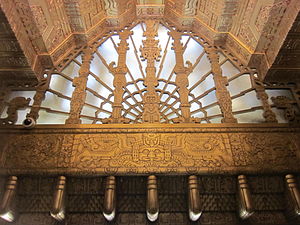
![English landscape garden at Stourhead, UK, by Henry Hoare, the 1740s[28]](http://upload.wikimedia.org/wikipedia/commons/thumb/7/71/Stourhead_Bridge_A.jpg/340px-Stourhead_Bridge_A.jpg)
![Panthéon, Paris, by Jacques-Germain Soufflot and Jean-Baptiste Rondelet, 1758–1790[29]](http://upload.wikimedia.org/wikipedia/commons/thumb/a/a3/Pantheon_1%2C_Paris_May_11%2C_2013.jpg/300px-Pantheon_1%2C_Paris_May_11%2C_2013.jpg)
![Petit Trianon, Versailles, France, by Ange-Jacques Gabriel, 1764[30]](http://upload.wikimedia.org/wikipedia/commons/thumb/7/7f/West_facade_of_Petit_Trianon_002.JPG/316px-West_facade_of_Petit_Trianon_002.JPG)
![Staircase of the Petit Trianon, by Ange-Jacques Gabriel, 1764[30]](http://upload.wikimedia.org/wikipedia/commons/thumb/e/eb/The_Petit_Trianon_%2823935245609%29.jpg/337px-The_Petit_Trianon_%2823935245609%29.jpg)
![Stairway of the Grand Theater of Bordeaux, Bordeaux, France, by Victor Louis, 1777-1780[31]](http://upload.wikimedia.org/wikipedia/commons/thumb/d/d5/Bordeaux_Grand_Th%C3%A9%C3%A2tre_R03.jpg/328px-Bordeaux_Grand_Th%C3%A9%C3%A2tre_R03.jpg)
![The Hall, Osterley Park, London, by Robert Adam, 1767[32]](http://upload.wikimedia.org/wikipedia/commons/thumb/5/56/Osterley_House%2C_entrance_hall.jpg/300px-Osterley_House%2C_entrance_hall.jpg)
![Cabinet Doré of Marie-Antoinette in the Palace of Versailles, 1783, by the Rousseau brothers[33]](http://upload.wikimedia.org/wikipedia/commons/thumb/d/d9/Cabinet_dore_Marie-Antoinette_Versailles.jpg/151px-Cabinet_dore_Marie-Antoinette_Versailles.jpg)


![Empress Joséphine's Bedroom in Château de Malmaison, Rueil-Malmaison, France, by Charles Percier and Pierre-François-Léonard Fontaine, 1800-1802[34]](http://upload.wikimedia.org/wikipedia/commons/thumb/e/e1/Ch%C3%A2teau_de_Malmaison%2C_France_%2848029730202%29.jpg/338px-Ch%C3%A2teau_de_Malmaison%2C_France_%2848029730202%29.jpg)

![Neue Wache, Berlin, by Karl Friedrich Schinkel and Salomo Sachs, 1816[35]](http://upload.wikimedia.org/wikipedia/commons/thumb/e/ee/150214_Neue_Wache_Berlin.jpg/343px-150214_Neue_Wache_Berlin.jpg)
![Cast iron railing detail of the Schlossbrücke, Berlin, by Karl Friedrich Schinkel, designed in 1819 and produced in 1824[36]](http://upload.wikimedia.org/wikipedia/commons/thumb/c/c6/2021-07-19_Schlo%C3%9Fbr%C3%BCcke_03.jpg/300px-2021-07-19_Schlo%C3%9Fbr%C3%BCcke_03.jpg)
![Burns Monument, Edinburgh, UK, by Thomas Hamilton, 1820-1831[37]](http://upload.wikimedia.org/wikipedia/commons/thumb/2/26/Burns_Monument_%2843281676364%29.jpg/184px-Burns_Monument_%2843281676364%29.jpg)






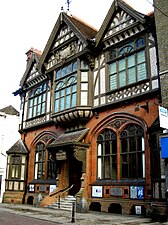

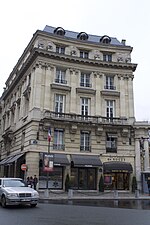

![Romanian Revival - The C.N. Câmpeanu House on Bulevardul Dacia, Bucharest, Romania, ca 1923, by Constantin Nănescu[41]](http://upload.wikimedia.org/wikipedia/commons/thumb/8/8e/56%2C_Bulevardul_Dacia%2C_Bucharest_%28Romania%29.jpg/308px-56%2C_Bulevardul_Dacia%2C_Bucharest_%28Romania%29.jpg)
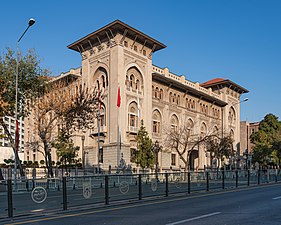
![Mediterranean Revival - General Mandiros Ciomac and Simion Ciomac Building (Strada Armenească no. 12), Bucharest, by Ion Giurgea, 1938[42]](http://upload.wikimedia.org/wikipedia/commons/thumb/c/c9/12_Strada_Armeneasc%C4%83%2C_Bucharest_%2803%29.jpg/170px-12_Strada_Armeneasc%C4%83%2C_Bucharest_%2803%29.jpg)
![Exterior of the Palais Garnier, Paris, by Charles Garnier, 1860–1875[48]](http://upload.wikimedia.org/wikipedia/commons/thumb/6/6d/Paris_Palais_Garnier_2010-04-06_16.55.07.jpg/398px-Paris_Palais_Garnier_2010-04-06_16.55.07.jpg)
![Grand stairs of the Palais Garnier, by Charles Garnier, 1860–1875[48]](http://upload.wikimedia.org/wikipedia/commons/thumb/1/18/Opera_Garnier_Grand_Escalier.jpg/282px-Opera_Garnier_Grand_Escalier.jpg)
![The CEC Palace on Victory Avenue, Bucharest, Romania, by Paul Gottereau, 1897-1900[49]](http://upload.wikimedia.org/wikipedia/commons/thumb/2/2b/Palacio_CEC%2C_Bucarest%2C_Ruman%C3%ADa%2C_2016-05-29%2C_DD_91-93_HDR.jpg/391px-Palacio_CEC%2C_Bucarest%2C_Ruman%C3%ADa%2C_2016-05-29%2C_DD_91-93_HDR.jpg)
![Cantacuzino Palace, Bucharest, by Ion D. Berindey, 1898-1906[50]](http://upload.wikimedia.org/wikipedia/commons/thumb/8/84/The_Cantacuzino_Palace_from_Bucharest_%28Romania%29.jpg/333px-The_Cantacuzino_Palace_from_Bucharest_%28Romania%29.jpg)
![Petit Palais, Paris, by Charles Giraud, 1900[51]](http://upload.wikimedia.org/wikipedia/commons/thumb/7/71/Petit-Palais-Paris-02-2018.jpg/457px-Petit-Palais-Paris-02-2018.jpg)
![Anker Building, Bucharest, by Leonida Negrescu, ca1900[52]](http://upload.wikimedia.org/wikipedia/commons/thumb/b/b7/Building_at_the_intersection_of_Calea_Victoriei_with_Strada_Franklin%2C_Bucharest%2C_circa_1900%2C_by_Leonida_Negrescu.jpg/192px-Building_at_the_intersection_of_Calea_Victoriei_with_Strada_Franklin%2C_Bucharest%2C_circa_1900%2C_by_Leonida_Negrescu.jpg)
![Grand Central Terminal, New York City, by Reed and Stem and Warren and Wetmore, 1903[53]](http://upload.wikimedia.org/wikipedia/commons/thumb/7/71/Image-Grand_central_Station_Outside_Night_2.jpg/280px-Image-Grand_central_Station_Outside_Night_2.jpg)
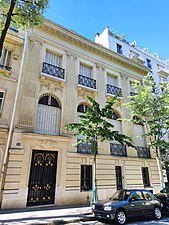
![Villa, Antwerp, Belgium, by Michel de Braey, 1913[54]](http://upload.wikimedia.org/wikipedia/commons/thumb/2/27/Della_Faillelaan_23%2C_Antwerpen.jpg/300px-Della_Faillelaan_23%2C_Antwerpen.jpg)
![Les Halles, Paris, by Victor Baltard, 1852-1855[58]](http://upload.wikimedia.org/wikipedia/commons/thumb/d/d1/Les_Halles%2C_Paris%2C_by_Victor_Baltard%2C_1852-1855.jpg/511px-Les_Halles%2C_Paris%2C_by_Victor_Baltard%2C_1852-1855.jpg)
![Plan and elevation for the Crystal Palace, London, by Joseph Paxton, 1854[59]](http://upload.wikimedia.org/wikipedia/commons/thumb/7/70/Crystal.Palace.Paxton.Plan.jpg/170px-Crystal.Palace.Paxton.Plan.jpg)
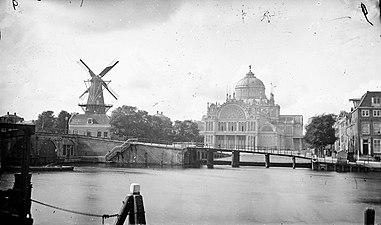
![Le Bon Marché, Paris, by Louis-Charles Boileau in collaboration with the engineering firm of Gustave Eiffel, 1872[60]](http://upload.wikimedia.org/wikipedia/commons/thumb/5/5f/Le_Bon_March%C3%A9%2C_001.jpg/319px-Le_Bon_March%C3%A9%2C_001.jpg)
![Interior of the Bradbury Building, with its exposed staircases and free-standing hydraulic elevators, Los Angeles, USA, by George Herbert Wyman, 1889-1893[61]](http://upload.wikimedia.org/wikipedia/commons/thumb/2/2c/Bradbury_Atrium.jpg/338px-Bradbury_Atrium.jpg)
![Tietz Department Store, with its huge shop windows running through all the floors, Berlin, Germany, by Bernhard Sehring and L.Lachmann, 1899-1900[62]](http://upload.wikimedia.org/wikipedia/commons/thumb/b/bc/Warenhaus_Tietz_Leipziger_Str._1900.jpg/175px-Warenhaus_Tietz_Leipziger_Str._1900.jpg)
![Hôtel Tassel, Brussels, Belgium, by Victor Horta, 1894[64]](http://upload.wikimedia.org/wikipedia/commons/thumb/a/af/Tassel_House_stairway.JPG/283px-Tassel_House_stairway.JPG)
![Entrance of the Castel Béranger, Paris, by Hector Guimard, 1895–1898[65]](http://upload.wikimedia.org/wikipedia/commons/thumb/f/f9/Castel_B%C3%A9ranger%2C_February_16%2C_2013.jpg/240px-Castel_B%C3%A9ranger%2C_February_16%2C_2013.jpg)
![Secession Building, Vienna, Austria, by Joseph Maria Olbrich, 1897[66]](http://upload.wikimedia.org/wikipedia/commons/thumb/a/ac/Wien%2C_Friedrichstra%C3%9Fe_12%2C_Secession-20160621-011.jpg/360px-Wien%2C_Friedrichstra%C3%9Fe_12%2C_Secession-20160621-011.jpg)
![La Fermette Marbeuf, Paris, by Émile Hurtré, 1898[67]](http://upload.wikimedia.org/wikipedia/commons/thumb/8/89/FMarbeuf.jpg/457px-FMarbeuf.jpg)

![The Porte Dauphine Métro Station, Paris, by Hector Guimard, 1900[68]](http://upload.wikimedia.org/wikipedia/commons/thumb/c/ce/Paris_Metro_2_Porte_Dauphine_Libellule.JPG/360px-Paris_Metro_2_Porte_Dauphine_Libellule.JPG)
![Maison Huot, Nancy, France, by Émile André, 1903[69]](http://upload.wikimedia.org/wikipedia/commons/thumb/a/a6/Maison_Huot_de_style_art_nouveau_%28Nancy%29_%287966479700%29.jpg/180px-Maison_Huot_de_style_art_nouveau_%28Nancy%29_%287966479700%29.jpg)
![Casa Batlló, Barcelona, Spain, by Antoni Gaudí, 1904–1906[70]](http://upload.wikimedia.org/wikipedia/commons/thumb/b/bf/Casa_Batllo_Overview_Barcelona_Spain_cut.jpg/195px-Casa_Batllo_Overview_Barcelona_Spain_cut.jpg)
![Mița the Cyclist House (Bucharest, Romania), 1908, by Nicolae C. Mihăescu[71]](http://upload.wikimedia.org/wikipedia/commons/thumb/4/41/9_Strada_Biserica_Amzei%2C_Bucharest_%2801%29.jpg/215px-9_Strada_Biserica_Amzei%2C_Bucharest_%2801%29.jpg)

![Steiner House, Vienna, Austria, by Adolf Loos, 1910[76]](http://upload.wikimedia.org/wikipedia/commons/thumb/2/2e/Casa_Steiner_-_Foto_Fachada_Trasera.jpg/307px-Casa_Steiner_-_Foto_Fachada_Trasera.jpg)
![Fagus Factory, Alfeld, Germany, by Walter Gropius, 1911[77]](http://upload.wikimedia.org/wikipedia/commons/thumb/b/b3/Fagus_Gropius_Hauptgebaeude_200705_wiki_front.jpg/375px-Fagus_Gropius_Hauptgebaeude_200705_wiki_front.jpg)
![Villa Tugendhat, Brno, Czech Republic, by Ludwig Mies van der Rohe and Lilly Reich, 1930[78]](http://upload.wikimedia.org/wikipedia/commons/thumb/9/9c/VT16_PD_zahrada.jpg/339px-VT16_PD_zahrada.jpg)
![The boudoir of fashion designer Jeanne Lanvin (now in the Museum of Decorative Arts, Paris), by Armand-Albert Rateau, 1920-1922[80]](http://upload.wikimedia.org/wikipedia/commons/thumb/3/3d/The_boudoir_of_fashion_designer_Jeanne_Lanvin%2C_now_in_the_Museum_of_Decorative_Arts_in_Paris.png/297px-The_boudoir_of_fashion_designer_Jeanne_Lanvin%2C_now_in_the_Museum_of_Decorative_Arts_in_Paris.png)

![La Samaritaine, Paris, by Henri Sauvage, 1926–1928[81]](http://upload.wikimedia.org/wikipedia/commons/thumb/3/36/La_samaritaine_as_seen_from_the_Pont_Neuf.jpg/315px-La_samaritaine_as_seen_from_the_Pont_Neuf.jpg)

![Chrysler Building, New York City, by William Van Allen, 1930[82]](http://upload.wikimedia.org/wikipedia/commons/thumb/0/0b/Chrysler_Building_spire%2C_Manhattan%2C_by_Carol_Highsmith_%28LOC_highsm.04444%29.png/123px-Chrysler_Building_spire%2C_Manhattan%2C_by_Carol_Highsmith_%28LOC_highsm.04444%29.png)
![Musée de la Mer, Biarritz, France, by Joseph Hiriart, 1933[83]](http://upload.wikimedia.org/wikipedia/commons/thumb/d/da/Biarritz_-_Mus%C3%A9e_de_la_mer_%28edited%29.jpg/306px-Biarritz_-_Mus%C3%A9e_de_la_mer_%28edited%29.jpg)
![Barcelona Pavilion, Barcelona, Spain, by Ludwig Mies van der Rohe, 1929[85]](http://upload.wikimedia.org/wikipedia/commons/thumb/4/42/The_Barcelona_Pavilion%2C_Barcelona%2C_2010.jpg/336px-The_Barcelona_Pavilion%2C_Barcelona%2C_2010.jpg)
![Lever House, New York City, by Skidmore, Owings & Merrill, 1952[87]](http://upload.wikimedia.org/wikipedia/commons/thumb/c/c7/Lever_House_390_Park_Avenue.jpg/175px-Lever_House_390_Park_Avenue.jpg)
![Seagram Building, New York City, by Ludwig Mies van der Rohe, 1958[88]](http://upload.wikimedia.org/wikipedia/commons/thumb/f/f1/NewYorkSeagram_04.30.2008.JPG/146px-NewYorkSeagram_04.30.2008.JPG)

![Habitat 67, Montreal, Canada, by Moshe Safdie, 1966–1967[91]](http://upload.wikimedia.org/wikipedia/commons/thumb/a/ad/Montreal_-_QC_-_Habitat67_2.jpg/321px-Montreal_-_QC_-_Habitat67_2.jpg)
![Geisel Library, San Diego, California, US, by William Pereira, 1970[92]](http://upload.wikimedia.org/wikipedia/commons/thumb/4/46/Geisel_Library_3_2013-08-08.jpg/169px-Geisel_Library_3_2013-08-08.jpg)
![Robarts Library, Toronto, Canada, by Mathers & Halden Architects, 1973[93]](http://upload.wikimedia.org/wikipedia/commons/thumb/b/b3/Robarts_Library-2.jpg/265px-Robarts_Library-2.jpg)
![Freeway Park Fountain, Seattle, Washington, US, by Lawrence Halprin, 1976[94]](http://upload.wikimedia.org/wikipedia/commons/thumb/0/07/Seattle_Freeway_Park_24.jpg/300px-Seattle_Freeway_Park_24.jpg)
![Piazza d'Italia, New Orleans, USA, by Charles Moore, 1978[96]](http://upload.wikimedia.org/wikipedia/commons/thumb/2/21/PiazzaDItalia1990.jpg/384px-PiazzaDItalia1990.jpg)
![Neue Staatsgalerie, Stuttgart, Germany, by James Stirling, 1984[97]](http://upload.wikimedia.org/wikipedia/commons/thumb/b/bb/Stuttgart_-_Neue_Staatsgalerie_%2835736927202%29.jpg/338px-Stuttgart_-_Neue_Staatsgalerie_%2835736927202%29.jpg)
![AT&T Headquarters, New York City, by Philip Johnson and John Burgee, 1984[98]](http://upload.wikimedia.org/wikipedia/commons/thumb/d/d5/Sony_Building_by_David_Shankbone_crop.jpg/131px-Sony_Building_by_David_Shankbone_crop.jpg)
![Team Disney Building, Los Angeles, USA, by Michael Graves, 1990[99]](http://upload.wikimedia.org/wikipedia/commons/thumb/f/f6/The_Walt_Disney_Company_office.jpg/450px-The_Walt_Disney_Company_office.jpg)
![Isle of Dogs Pumping Station, London, John Outram, 1988[100]](http://upload.wikimedia.org/wikipedia/commons/thumb/0/09/Pumping_station%2C_Stewart_Street_%28geograph_4678320%29.jpg/201px-Pumping_station%2C_Stewart_Street_%28geograph_4678320%29.jpg)
![Multicolour interior of the Cambridge Judge Business School, Cambridge, UK, by John Outram, 1995[101]](http://upload.wikimedia.org/wikipedia/commons/thumb/8/81/Cambridge_University_Judge_Business_School_interior.jpg/169px-Cambridge_University_Judge_Business_School_interior.jpg)
![House for Essex, Wrabness, Essex, UK, by FAT and Grayson Perry, 2014[102]](http://upload.wikimedia.org/wikipedia/commons/thumb/6/65/A_House_For_Essex_-_geograph.org.uk_-_4471511.jpg/300px-A_House_For_Essex_-_geograph.org.uk_-_4471511.jpg)
![Wexner Center for the Arts, Ohio State University, Columbus, Ohio, US, by Peter Eisenman, 1989[103]](http://upload.wikimedia.org/wikipedia/commons/thumb/d/d3/Wexner_Center_for_the_Arts_by_Peter_Eisenman.jpg/300px-Wexner_Center_for_the_Arts_by_Peter_Eisenman.jpg)
![Vitra Fire Station, Weil am Rhein, Germany, by Zaha Hadid, 1989–1993[104]](http://upload.wikimedia.org/wikipedia/commons/thumb/a/a0/Vitra_Campus_-_Hadid_Fire_Station_-_full_view%2C_blue_sky.jpg/300px-Vitra_Campus_-_Hadid_Fire_Station_-_full_view%2C_blue_sky.jpg)
![Jewish Museum, Berlin, Germany, by Daniel Libeskind, 1992–1999[105]](http://upload.wikimedia.org/wikipedia/commons/thumb/e/e5/Jewish_Museum_Berlin_-_panoramio_%283%29.jpg/338px-Jewish_Museum_Berlin_-_panoramio_%283%29.jpg)
![Guggenheim Museum, Bilbao, Spain, by Frank Gehry, opened in 1997[106]](http://upload.wikimedia.org/wikipedia/commons/thumb/c/c7/Bilbao_-_Guggenheim_aurore.jpg/337px-Bilbao_-_Guggenheim_aurore.jpg)
![Phaeno Science Center, Wolfsburg, Germany, by Zaha Hadid, 2005[107]](http://upload.wikimedia.org/wikipedia/commons/thumb/b/b0/5307_Wolfsburg.JPG/338px-5307_Wolfsburg.JPG)